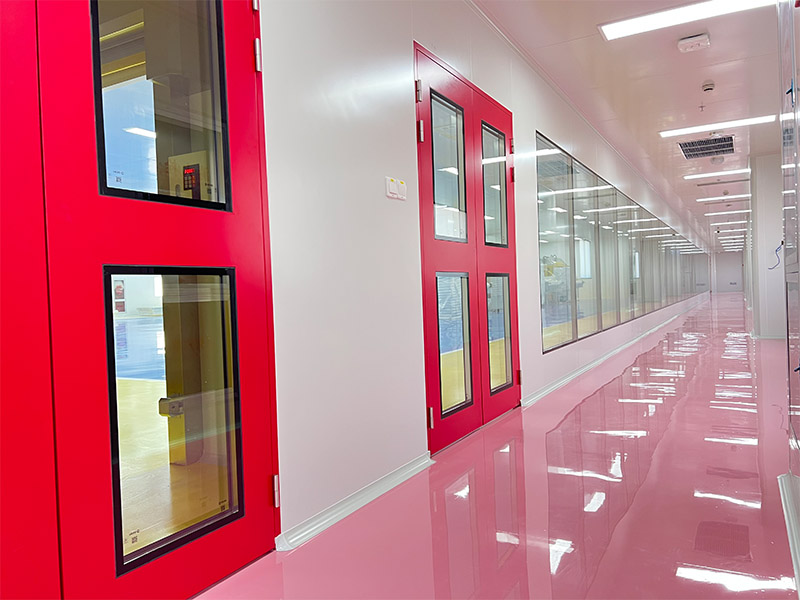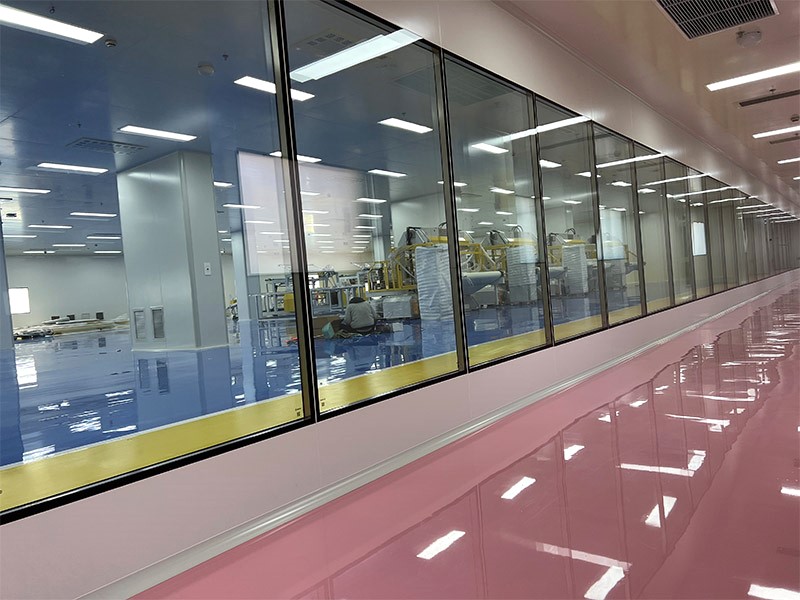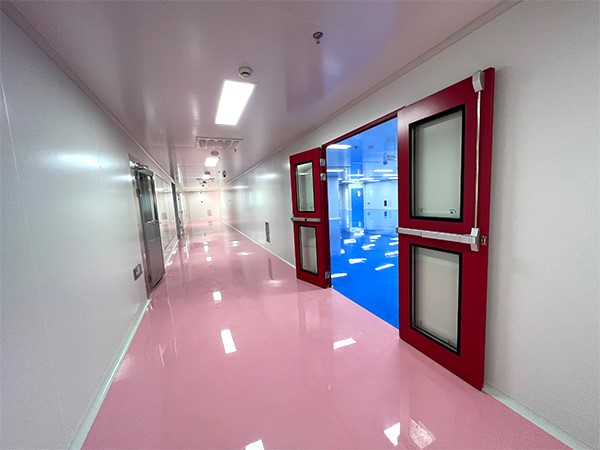


1. Clean rooms are increasingly widely used in various areas of my country in various industries such as electronics, biopharmaceuticals, aerospace, precision machinery, fine chemicals, food processing, health care products and cosmetics production, and scientific research. Clean production environments, clean experimental environments and the importance of creating a clean usage environment is increasingly recognized or recognized by people. Most clean rooms are equipped with production equipment and scientific research experimental equipment of varying degrees and using various process media. Many of them are valuable equipment and instruments, not only the construction cost is expensive, but also some flammable, explosive and hazardous process media are often used; at the same time, according to the requirements for human and material cleanliness in clean room, the passages of the clean room (area) are generally moved back and forth, making personnel evacuation more difficult , and due to its airtightness, once a fire occurs, it is not easy to be discovered from the outside, and it is difficult for firefighters to approach and enter. Therefore, it is generally believed that the installation of fire safety facilities in clean room is very important, and it can be said to ensure the safety of clean room. The top priority is to take safety measures to prevent or avoid major economic losses in clean room and serious damage to personnel's lives due to the occurrence of fire. It has become a consensus to install fire alarm systems and various devices in clean room, and it is an indispensable safety measure. Therefore, "automatic fire alarm systems" are currently installed in newly built, renovated and expanded clean rooms. The mandatory provisions in the "Factory Building Design Specifications": "Fire alarm detectors should be installed on the production floor, technical mezzanine, machine room, station building, etc. of the clean room.
2. Manual fire alarm buttons should be installed in production areas and corridors of clean workshops. "The clean room should be equipped with a fire duty room or control room, which should not be located in the clean area. The fire duty room should be equipped with a special telephone switchboard for fire protection. The fire control equipment and line connections of the clean room should be reliable. The control and display functions of the control equipment , should comply with the relevant provisions of the current national standard "Design Specifications for Automatic Fire Alarm Systems", which requires that fire alarms in clean rooms (areas) should be verified and the following fire linkage controls should be carried out: the indoor fire pump should be started and its feedback signal should be received. In addition to automatic control, a manual direct control device should also be set up in fire control room; the electric fireproof door of the relevant parts should be closed, the corresponding air conditioning circulation fan, exhaust fan and fresh air fan should be stopped, and their feedback signals should be received; the relevant parts should be closed. Electric fire doors and fire shutter doors should be in certain locations. The backup emergency lights and evacuation sign lights should be controlled to light up. In the fire control room or low-voltage distribution room, the non-fire power supply in the relevant parts should be manually cut off; the fire emergency loudspeaker should be started and manual or automatically broadcast; the elevator should be controlled to lower to the first floor and its feedback signal should be received.
3. In view of the requirements of the product production process and the clean area in clean room, the necessary cleanliness level should be maintained. Therefore, it is emphasized in clean room that after the fire detector alarms, manual verification and control should be carried out. When it is confirmed that it has actually occurred. After a fire, the linkage control equipment set up according to regulations operates and feedback signals to avoid causing large losses. The production requirements in clean rooms are different from those in ordinary factories. For clean rooms (areas) with strict cleanliness requirements, if the purification air conditioning system is shut down and restored again, the cleanliness will be affected, making it unable to meet the process production requirements and causing losses.
4. According to the characteristics of clean workshops, fire detectors should be installed in clean production areas, technical mezzanines, machine rooms and other rooms. According to the requirements of the national standard "Design Code for Automatic Fire Alarm Systems", when selecting fire detectors, you should generally do the following: For places where there is a smoldering stage in early stages of a fire, a large amount of smoke and a small amount of heat are generated, and there is little or no flame radiation, smoke-sensing fire detectors should be selected; for places where fires may develop rapidly and produce a large amount of heat, smoke and flame radiation, temperature-sensing fire detectors, smoke-sensing fire detectors, flame detectors or their combination can be selected; For places where fires develop rapidly, have strong flame radiation and a small amount of smoke and heat, flame detectors should be used. Due to the diversification of modern enterprise production processes and building materials, it is difficult to accurately judge the fire development trend and smoke, heat, flame radiation, etc. in the room. At this time, the location of the protected place where the fire may occur and the burning materials should be determined, material analysis, conduct simulated combustion tests, and select appropriate fire ash detectors based on test results. Normally, temperature-sensitive fire detectors are less sensitive to fire detection than smoke-sensitive type detectors. Heat-sensitive fire detectors do not respond to smoldering fires and can only respond after the flame reaches a certain level. Therefore, temperature-sensitive fire detectors are not suitable for protecting places where small fires may cause unacceptable losses, but temperature-sensing fire detection is more suitable for early warning in places where the temperature of an object changes directly. Flame detectors will respond as long as there is radiation from the flame. In places where fires are accompanied by open flames, the rapid response of flame detectors is better than smoke and temperature-sensing fire detectors. Therefore, in places where open flames are prone to burning, such as flame detectors are mostly used in places where combustible gases are used.
5. Clean rooms for LCD device panel manufacturing and optoelectronic product manufacturing often require the use of a variety of flammable, explosive, and toxic process media. Therefore, in the "Design Code for Clean room in electronic industry", fire safety facilities such as fire alarms are included. Most clean rooms in electronics industry belong to Category C production plants and should be classified as "secondary protection level". However, for clean room in electronic industry such as chip manufacturing and LCD device panel manufacturing, due to the complex production processes of such electronic products, some production processes require the use of a variety of flammable chemical solvents and flammable and toxic gases, special gases. The clean room is a closed space. Once a flood occurs, heat will leak nowhere and the fire will spread quickly. Through the air ducts or air ducts, the fireworks will spread rapidly along the air ducts, and the fire will spread quickly. The production equipment is very expensive, so it is very important to strengthen the fire alarm system setting of the clean room. Therefore, it is stipulated that when the fire protection zone area exceeds the regulations, the protection level should be upgraded to level one.
Post time: Dec-29-2023

